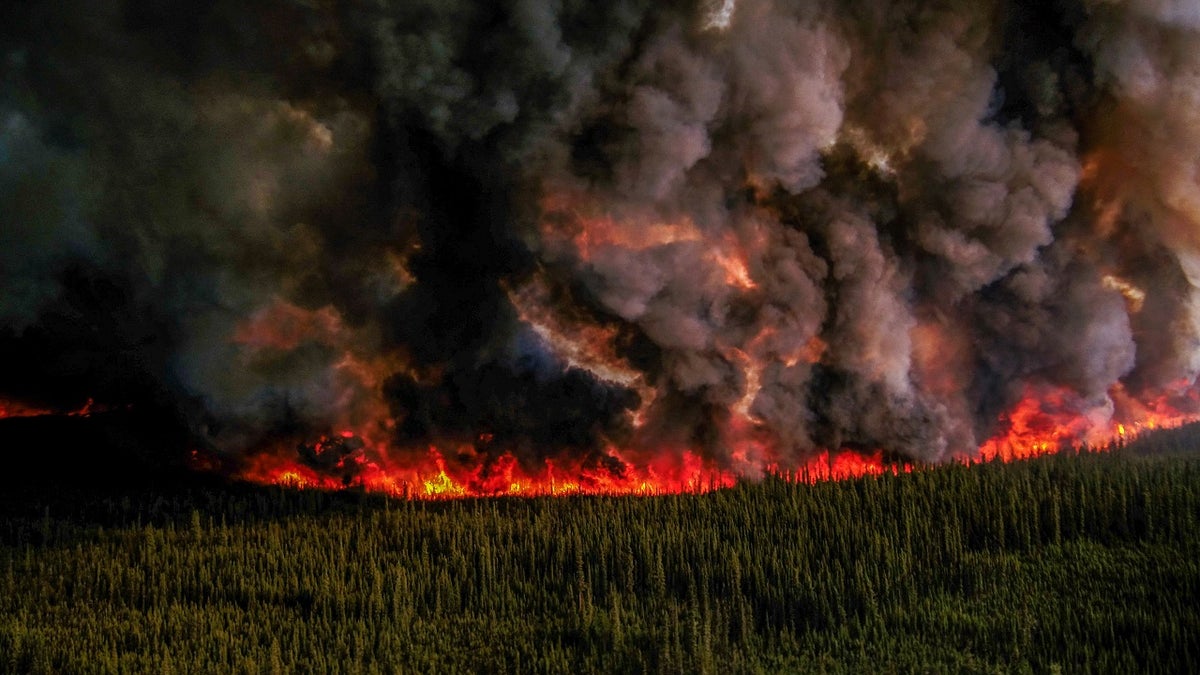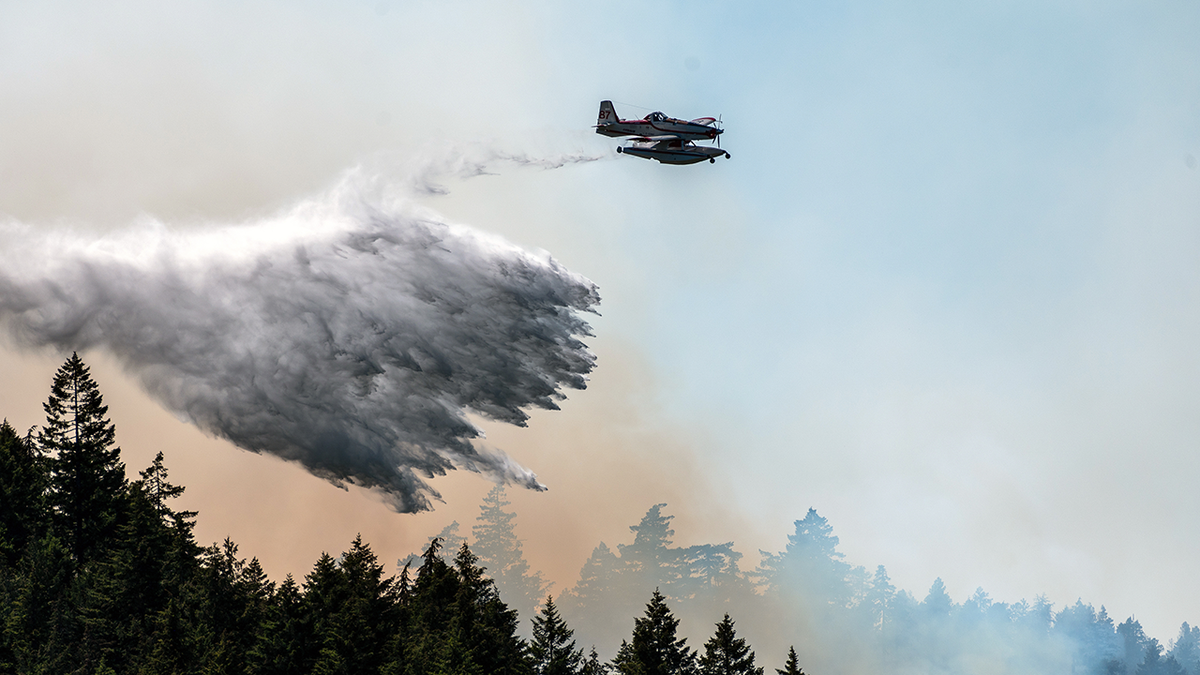Climate activists’ ‘inaction’ over Canadian wildfires puts them ‘totally at fault’: Daniel Turner
Power the Future founder Daniel Turner joined ‘Fox & Friends Weekend’ to weigh in on Biden joining Rep. Alexandria Ocasio-Cortez in linking the Canadian wildfires to the climate crisis.
More than 100 wildfires are sweeping their way across the Canadian provinces of Quebec and Ontario, sending waves of smoke into major cities in the northeastern United States, including New York and Philadelphia.
Predictably, the Biden administration and his alarmist allies in Congress are wasting no time in using the wildfires to call attention to climate change and for sweeping changes to the U.S. energy system.
For example, on June 7, Biden tweeted, "We’ve deployed more than 600 U.S. firefighters, support personnel and equipment to support Canada as they respond to record wildfires – events that are intensifying because of the climate crisis."

Smoke billows upwards from a planned ignition by firefighters tackling the Donnie Creek Complex wildfire south of Fort Nelson, British Columbia, on June 3, 2023. (.C. Wildfire Service/Reuters)
Also on June 7, Sen. Elizabeth Warren, D-Mass., tweeted, "Extreme weather. Drought. Massive wildfires that destroy our air quality. Evidence of a climate crisis is all around us and Northeasterners can look no further than out their own windows to find it."
CLIMATE CHANGE ACTIVISTS IGNORING CRUCIAL FACTOR BEHIND WILDFIRES, TRUMP ADMIN SECRETARY SAYS
However, despite countless statements from liberals and climate activists over the past two decades about the dangers of wildfires and extreme weather events caused by climate change, the available evidence overwhelmingly shows that no such connection exists. Wildfires are not becoming more frequent or burning more acreage. In fact, just the opposite is true.
The U.S. National Interagency Fire Center (NIFC), which has been tracking wildfires for decades, reports that the number of fires in 2022 was 68,988, and the amount of acreage burned was 7.57 million acres.
That might sound like a lot of fires, but the NIFC data show that these figures are well within the historical norm. In 2017, for example, 71,499 fires were reported and more than 10 million acres were burned. One decade earlier, in 2007, there were 85,705 fires that burned 9.32 million acres.
How, then, do climate alarmists and Democratic politicians so often get away with asserting that wildfires are worsening? It’s all due to cherry-picked data.
US FOREST SERVICE URGED TO DO MORE TO CONFRONT WILDFIRE CRISIS
In 2021, Biden’s first year as president, the NIFC, a group operated by several different federal agencies, altered its available wildfire data, eliminating data collected prior to 1983 from its website.

A fixed wing waterbomber drops water onto the Cameron Bluffs wildfire near Port Alberni, British Columbia, Canada, on Tuesday, June 6, 2023. (James MacDonald/Bloomberg via Getty Images)
Since 1983, the average annual number of wildfires and acres burned has increased, albeit relatively modestly, giving some the impression that wildfires are becoming a bigger problem than ever before. But if you look at the NIFC data collected prior to 1983, you see that there is nothing disturbing about the current trend.
Prior to 2021, the NIFC provided wildfire data going back to 1926, and from 1926 to the early 1950s, the number of acres burned per year was significantly higher than what we’re seeing today. In many years, it was three or even four times larger.
Even if wildfires were worsening, though, it wouldn’t necessarily indicate that climate change is the cause. Many different factors can contribute to the frequency and severity of wildfires. America’s growing population, especially in Western states, is an important consideration. Even more vital is forest management practices.
CLICK HERE TO GET THE OPINION NEWSLETTER
The Center for Biological Diversity, a left-leaning environmental group, acknowledges that, "The vast majority of western dry forests are at risk of large, high-intensity fire because of the effects of poor forest management over the past century. The primary factors that lead to current forest conditions include logging large trees, fire suppression and livestock grazing. Since the beginning of the 20th century, all three of these factors have been present in western forests, and they continue to play a role today."
And who, you might be wondering, is the biggest manager of U.S. forests? The very same federal government that is now blaming the problem of wildfires on climate change. Thirty-one percent of all forest land in America is owned by federal agencies, about 238 million acres. And most of those forests are located west of the Mississippi River, where climates tend to be more arid and susceptible to wildfires.

The Eagle wildfire burns in Alberta, Canada, May 13, 2023. (Government of Alberta Fire Service/The Canadian Press via AP)
CLICK HERE TO GET THE FOX NEWS APP
There is no evidence that the number or severity of wildfires like those currently raging in Canada are increasing because of climate change. It’s pure propaganda designed to trick Americans into supporting additional Green New Deal-like policies and to deflect blame from the federal government, which is responsible for managing huge swaths of U.S. forests.
Policymakers should be debating ways to improve forest management, not spending their time spewing fairytales about global warming. Americans deserve better.




